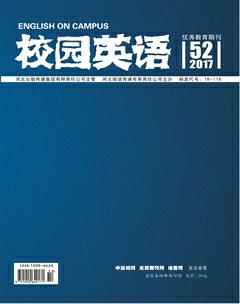Equivalence—based Translation theories
王锐
【Abstract】Translation theorists always attempt to provide strategies for translators to use if they would like to achieve a satisfactory result. Traditionally, translation is roughly divided into word-for-word (i.e. literal) translation and sense-for-sense (i.e. free) translation. In order to avoid these outdated opposite notions, theoreticians try to analyze systemically. Among them equivalence is one of the prevalent concepts in translation studies.
【Key words】Equivalence-based; Translation theories
Main Body
Generally, equivalence theories hold that source text (ST) and target text (TT) share some ‘sameness. Regarding the type and degree of ‘sameness, scholars suggest different equivalences. Vinay and Dabelnet, for example, initially argue that for equivalent expressions between language pairs to be considered acceptable, they must be listed in a bilingual dictionary “as full equivalents” (1995), but later admitted that this condition, while ideal, is non-exhaustive (1995). Jakobson, by contrast, stresses that there is no full equivalence between two words at the interlingual level (1959/2000), a contention he illustrates by comparing the meanings of ‘cheese in English and ‘сыр in Russian. Another famous figure in this field, Nida, published Towards a Science of Translating (1964) in an attempt to bring translation into the scientific age. “The old terms such as ‘literal, ‘free and ‘faithful translation are discarded by Nida in favor of types of equivalence:formal equivalence and dynamic equivalence” (Munday, 2012). “Nida argues that in formal equivalence the TT resembles very much the ST in both form and content whereas in dynamic equivalence an effort is made to convey the ST message in the TT as naturally as possible” (Panou, 2013).
Catford introduces the notion of ‘shift to describe the departures from formal correspondence (1965:73). He classifies shift into two types, level shift and category shift, but his study is mainly conducted in linguistic level. Koller examines in detail the concept of equivalence and distinguishes five different types:(a) denotative equivalence involving the extralinguistic content of a text, (b) connotative equivalence relating to lexical choices, (c) text-normative equivalence relating to text-types, (d) pragmatic equivalence involving the receiver of the text or message, and, finally, (e) formal equivalence relating to the form and aesthetics of the text (1979). Newmark replaces the terms formal and dynamic equivalence with semantic and communicative translation respectively. Semantic translation focuses on meaning whereas communicative translation concentrates on effect. In his opinion, communicative translation attempts to produce on its readers an effect as close as possible to that experienced by the readers of the original. “Semantic translation attempts to render, as closely as the semantic and syntactic structures of the second language allow, the exact contextual meaning of the original” (1981). Baker adopts a neutral approach and argues that equivalence is a relative notion because it is influenced by a variety of linguistic and cultural factors (1992). She states that equivalence exists in word, phrase, grammar, text and pragmatic levels. Adopting a bottom-up approach, Baker acknowledges the importance of individual words during the translation process, given that the translator looks firstly at the words as single units in order to find their equivalent in the TL. Lastly, Pym argues that there is no perfect equivalence between languages (2010) and distinguishes between natural and directional equivalence (2010).
Summary
Generally, translation is perceived as a process of transferring the ST into TT that can be conducted in different ranks, words, phrases, sentences or texts. Microstructural translation, like terminological translation, is one of the research subjects covered by equivalence-based theories. For example, Baker contends that equivalence can be analyzed at word level and above word level (2011). The various equivalence-based theories provide the translators the freedom to choose which guidance they could follow to finish their jobs.
References:
[1]BAKER,M.,2011.In Other Words:A Course Book on Translation.Abingdon:Routledge.
[2]JAKOBSON,R.,1959.On Linguistic Aspects of Translation.On Translation,3,pp.30-39.
[3]MUNDAY,J.,2012.Introducing Translation Studies:Theories and Applications.Third edn.London:Routledge.
[4]NEWMARK,P.,1981.Approaches to Translation.Oxford and New York:Pergamon Press.
[5]NIDA,E.A.,1964.Toward a Science of Translating:with Special Reference to Principles and Procedures Involved in Bible Translating.Leiden:E.J.Brill.
[6]PANOU,D.,2013.Equivalence in Translation Theories:a Critical Evaluation.Theory and Practice in Language Studies,3(1),pp.1.
[7]VINAY,J.and DARBELNET,J.,1995.Comparative Stylistics of French and English:a Methodology for Translation.Amsterdam/Philadelphia:John Benjamins Publishing.

